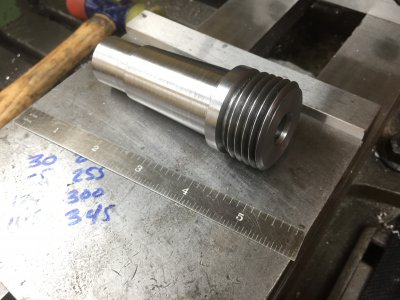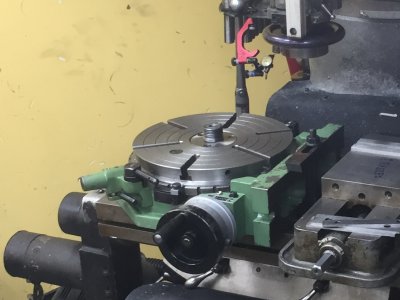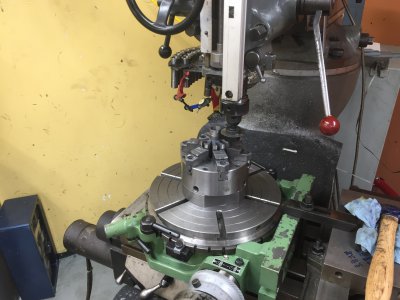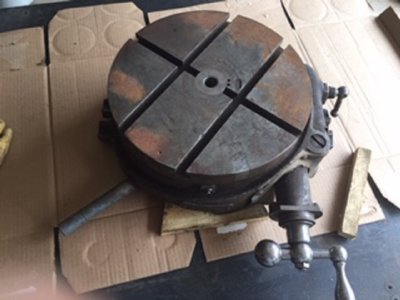- Joined
- Aug 29, 2016
- Messages
- 838
I have been thinking out my options on installing a chuck on my rotary table. It's an antique Excel 12" table with 1/;2" T-slots and a 1" center pilot. Looking around it seems the standard way is to make a backing plate that bolts to the table, then you bolt a chuck to the plate. This requires a chuck that mounts from the face side with through-bolts. I have spied on some suppliers and it seems that most offer only tiny chucks to fit their tiny rotary tables. A 3" vise on a 12" table seems a bit silly. To get into anything of decent size will take a fair chunk of bitcoin.. I'm a certified cheapskate. So....
I do have a pile of chucks. One has a 1-3/4-6 mount. It's from the dividing head. The rest are 2-3/8-6 from the lathe. There are four of those from 5" to 12", basicly small and large in 3 and 4 jaw. I also have a 3" long chunk of 5" round in 1045. S I'm thinking of making an adapter with a 1" dowel for center, slots for four T-nut mounts, and a 2-3/8-6 spigot to mimic the South Bend spindle nose. The down side is that is several joints, each with a potential accuracy loss. Table to adapter, adapter to back plate, back plate to chuck, chuck to ...... The upside is I could move work in the chuck from the mill to the lathe and back.
The questions: Is the 1045 a good choice for the adapter? I don't want to heat treat it and risk warpage, so it would be annealed 1045. And the more important question. Am I missing an easier way to do this that doesn't require cubic dollars?
I do have a pile of chucks. One has a 1-3/4-6 mount. It's from the dividing head. The rest are 2-3/8-6 from the lathe. There are four of those from 5" to 12", basicly small and large in 3 and 4 jaw. I also have a 3" long chunk of 5" round in 1045. S I'm thinking of making an adapter with a 1" dowel for center, slots for four T-nut mounts, and a 2-3/8-6 spigot to mimic the South Bend spindle nose. The down side is that is several joints, each with a potential accuracy loss. Table to adapter, adapter to back plate, back plate to chuck, chuck to ...... The upside is I could move work in the chuck from the mill to the lathe and back.
The questions: Is the 1045 a good choice for the adapter? I don't want to heat treat it and risk warpage, so it would be annealed 1045. And the more important question. Am I missing an easier way to do this that doesn't require cubic dollars?







